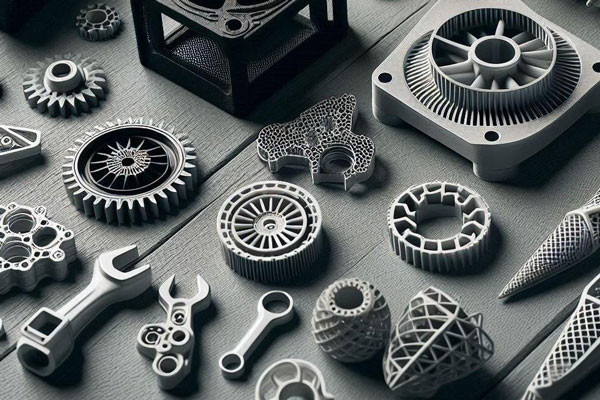Plastic injection molding remains a cornerstone of modern manufacturing. However, the industry is rapidly evolving to meet the demands of a changing world.
Sustainability and smart technology are driving the latest innovations in plastic injection molding. This article explores these trends and how they are shaping the future of production.
The Rise of Bioplastics in Injection Molding
One of the most significant trends in plastic injection molding is the growing use of bioplastics. These materials are derived from renewable resources like corn starch or sugarcane, offering a more sustainable alternative to traditional petroleum-based plastics.
Bioplastics, with their array of advantages, are a beacon of hope in the evolution of plastic injection molding:
- Reduced Carbon Footprint: Bioplastics have a lower carbon footprint than conventional plastics, helping to mitigate climate change.
- Biodegradability: Many bioplastics are biodegradable, meaning they can break down naturally in the environment.
- Improved Performance: Some bioplastics offer enhanced properties like heat resistance or flexibility.
Using bioplastics in plastic injection molding allows manufacturers to create eco-friendly products while maintaining the efficiency and cost-effectiveness of the process.
Smart Manufacturing with AI and IoT
Plastic injection molding is becoming increasingly intelligent thanks to the integration of artificial intelligence (AI) and the Internet of Things (IoT).
Here’s how these technologies are being used:
- Predictive Maintenance: Sensors and AI algorithms can predict when machines need maintenance, reducing downtime and improving efficiency.
- Quality Control: AI-powered vision systems can inspect parts for defects in real-time, ensuring consistent quality.
- Process Optimization: IoT devices can collect data on the molding process, allowing for analysis and optimization to improve efficiency and reduce waste.
By embracing smart manufacturing, companies can significantly enhance the plastic injection molding process, leading to higher-quality products and reduced costs, thereby assuring a brighter future for the industry.
3D Printing and Injection Molding: A Powerful Combination
3D printing is transforming the way molds are created for plastic injection molding. Instead of traditional machining, 3D printing allows for faster and more cost-effective mold production, especially for complex designs or small production runs.
This combination offers several benefits:
- Rapid Prototyping: Quickly create prototype molds to test designs before committing to expensive tooling.
- Customization: Easily produce custom molds for personalized products or low-volume applications.
- Complex Geometries: 3D printing enables the creation of molds with intricate features that would be difficult or impossible to machine traditionally.
The synergy between 3D printing and plastic injection molding unlocks a world of possibilities for innovation and customization, sparking excitement for the future of the industry.
Circular Economy and Recycling in Injection Molding
The plastic injection molding industry is increasingly embracing circular economy principles. This involves minimizing waste and maximizing the use of recycled materials.
Key initiatives include:
- Designing for Recyclability: Creating products that are easy to disassemble and recycle.
- Using Recycled Resins: Incorporating recycled plastics into the production process.
- Closed-Loop Systems: Developing systems where plastic waste is collected and recycled back into new products.
By adopting circular economy practices, plastic injection molding can contribute to a more sustainable future.
The Future of Plastic Injection Molding
Plastic injection molding is a dynamic industry constantly adapting to new challenges and opportunities. The trends discussed above – bioplastics, smart manufacturing, 3D printing, and circular economy practices – are shaping the future of this essential manufacturing process. By embracing these advancements, companies can improve sustainability, efficiency, and competitiveness in the ever-evolving world of plastics manufacturing.
Reference
*Image from https://protoandgo.com/

